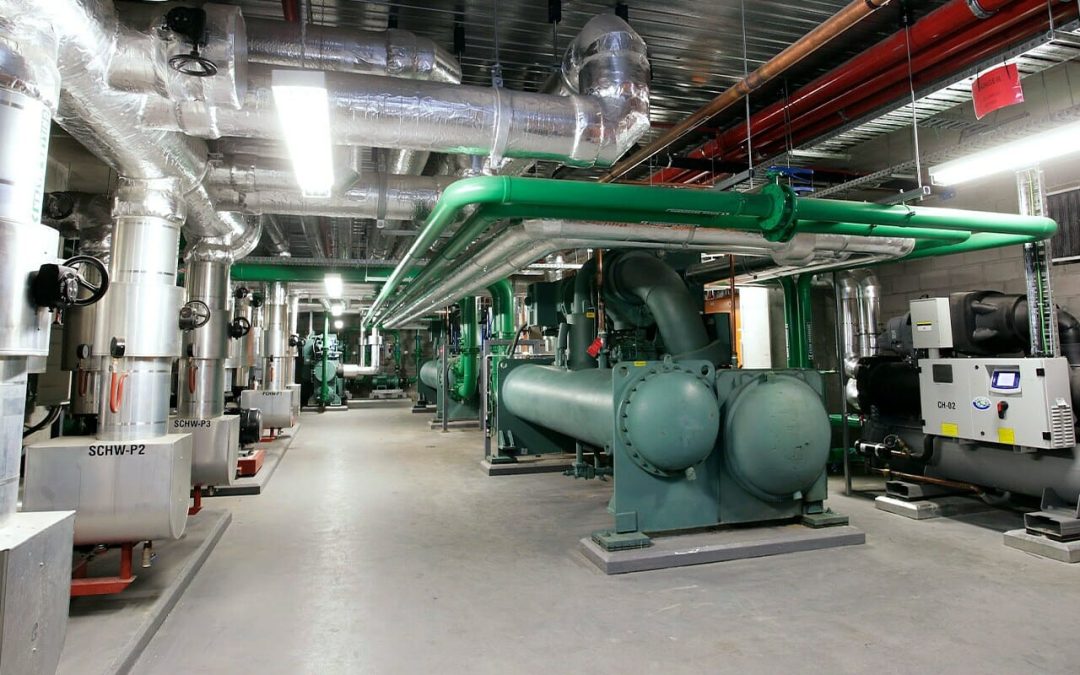The Regulatory Landscape: Driving Change
Environmental laws have long focused on refrigerants because of their potential to contribute to global warming and ozone depletion. In the past, chiller systems frequently employed chemicals like hydrochlorofluorocarbons (HCFCs) and chlorofluorocarbons (CFCs). Nevertheless, because of their high ODP, they were phased out by international agreements like the Montreal Protocol. As a result, the industry switched to hydrofluorocarbons (HFCs), which have a high global warming potential (GWP) but do not damage the ozone layer.
Because HFCs contribute to climate change, the emphasis has changed in recent years toward phasing them down. Adopted in 2016, the Kigali Amendment to the Montreal Protocol outlines a global commitment to reduce HFC production and consumption by more than 80% by 2047. The hunt for low-GWP, energy- and environmentally-efficient alternatives has quickened as a result of this international agreement.
Low-GWP Alternatives: The New Generation of Refrigerants
The search for low-GWP refrigerants has resulted in the creation of new substances that strike a balance between performance, safety, and environmental effects. There are various varieties of these next-generation refrigerants, each with pros and cons of their own:
· HFOs:
Hydrofluoroolefins, or HFOs, are a major development in refrigerant technology. They are a good substitute for HFCs because they have a low GWP and no ODP. HFOs have a lower environmental impact because of their faster atmospheric breakdown. They can, however, be slightly combustible, thus proper safety precautions must be taken while designing and using HVAC systems.
· Natural Refrigerants:
Because of their extremely low greenhouse gas footprint and sustainability, natural refrigerants like ammonia (R-717), carbon dioxide (R-744), and hydrocarbons (like propane, R-290) are becoming more and more popular. Ammonia’s excellent efficiency and thermodynamic qualities make it especially useful in industrial applications. But because it is poisonous, strict safety precautions must be used. Although carbon dioxide has a GWP of 1, it is an appealing alternative that necessitates a robust system design due to its high operating pressure. Hydrocarbons are effective and have a low greenhouse gas footprint, but they are quite combustible and should be handled carefully.
· A2L and Blended Refrigerants:
Blended refrigerants blend various ingredients to strike a compromise between safety, GWP, and performance. In chiller applications, A2L refrigerants—a class of low-GWP, somewhat flammable refrigerants—are gaining popularity. The purpose of these blends is to lessen their environmental impact while simulating the performance qualities of HFCs. However, building rules and safety requirements need to be updated due to the flammability of A2L refrigerants.
Managing the Change: Difficulties and Possibilities
Adopting new technologies and switching to low-GWP refrigerants offer the potential for efficiency and sustainability, but they also bring with them difficulties. The industry needs to manage concerns about expenses, security, and adhering to regulations.
- Cost Impacts: Developing and deploying low-GWP refrigerants and related technologies can be expensive. This covers the price of staff training, system retrofitting, and research & development. Nonetheless, long-term energy savings and adherence to rules frequently offset these expenses.
- Safety Concerns: A2L blends and natural refrigerants in particular raise issues regarding flammability and toxicity that should be taken into account when using low-GWP refrigerants. To guarantee safe operation, the industry must address these issues with updated safety regulations, training, and system design changes.
- Regulatory Compliance: Keeping up with the ever-changing regulations requires alertness and flexibility. To guarantee that their systems satisfy both present and future standards, manufacturers and building operators need to stay up to date on regulatory developments. This covers adherence to regional construction codes, environmental laws, and safety standards.
FAQs:
1. What Effect Does HVAC System Sizing Have on Efficiency and Performance?
An HVAC system’s efficiency and performance are greatly impacted by its size. A system that is too small may have trouble keeping the proper temperature, which will increase wear and energy usage. On the other hand, a larger system will cycle on and off more often, which will result in inefficiency, inconsistent temperatures, and elevated humidity.
2. What are some ways to optimize HVAC systems for extreme weather conditions?
By installing high-efficiency insulation, utilizing programmable thermostats, and making sure the system is the right size for the space it serves, HVAC systems can be made more resilient to harsh weather. High-efficiency air conditioners or evaporative coolers may work better in hotter areas, whereas heat pumps with additional heating may be required in colder climates.
3. What Role Does Duct Sealing Play in the Effectiveness of HVAC Systems?
Because leaking ducts can result in considerable energy losses, higher utility bills, and inconsistent heating or cooling, duct sealing is essential for the efficiency of HVAC systems. The efficient delivery of conditioned air to the designated areas is ensured by properly sealed ducts, which enhances indoor comfort and system efficiency.
4. How Do Variable Refrigerant Flow (VRF) Systems Differ from Traditional HVAC Systems?
The capacity of Variable Refrigerant Flow (VRF) systems to simultaneously heat and cool various parts of a building sets them apart from typical HVAC systems. They accomplish this by altering the refrigerant flow to various indoor units, which enables more energy efficiency and accurate temperature management. Large residential properties and commercial buildings with various zones and distinct heating and cooling requirements are good candidates for VRF systems.
5. What Are the Advantages of Inverter Technology in HVAC Systems?
Instead of cycling on and off like in the standard HVAC systems, inverter technology in HVAC systems enables variable speed operation for the compressor. As a result, the interior temperature remains more constant, less energy is used, and the system experiences less wear and tear. Because inverter-driven systems precisely tailor their output to the amount of cooling or heating required, they are more energy-efficient and provide more comfort.


